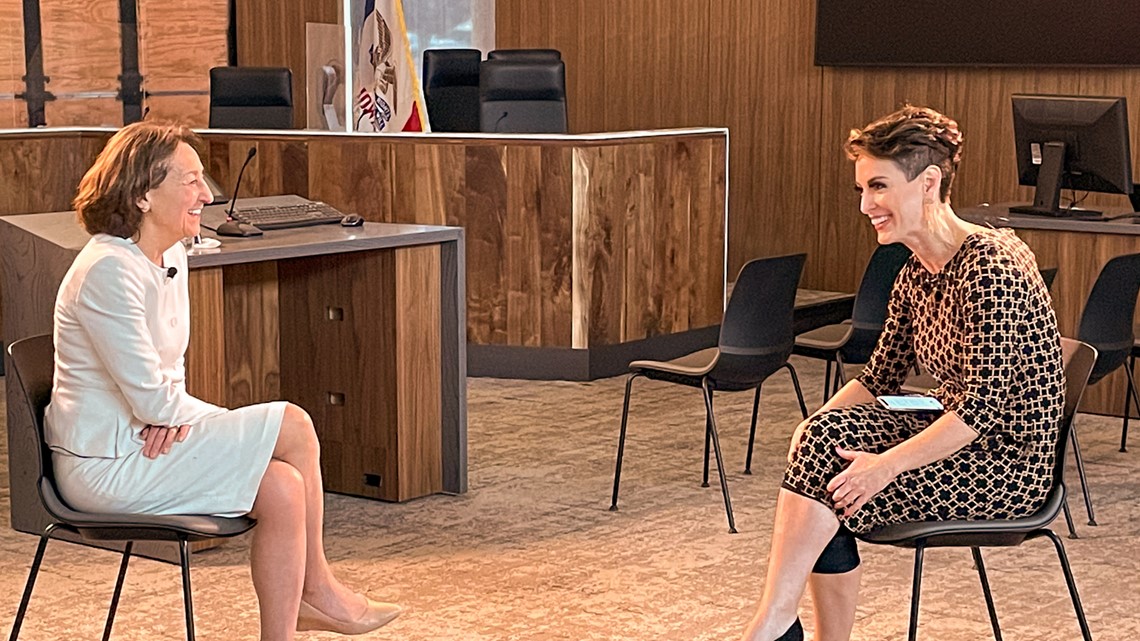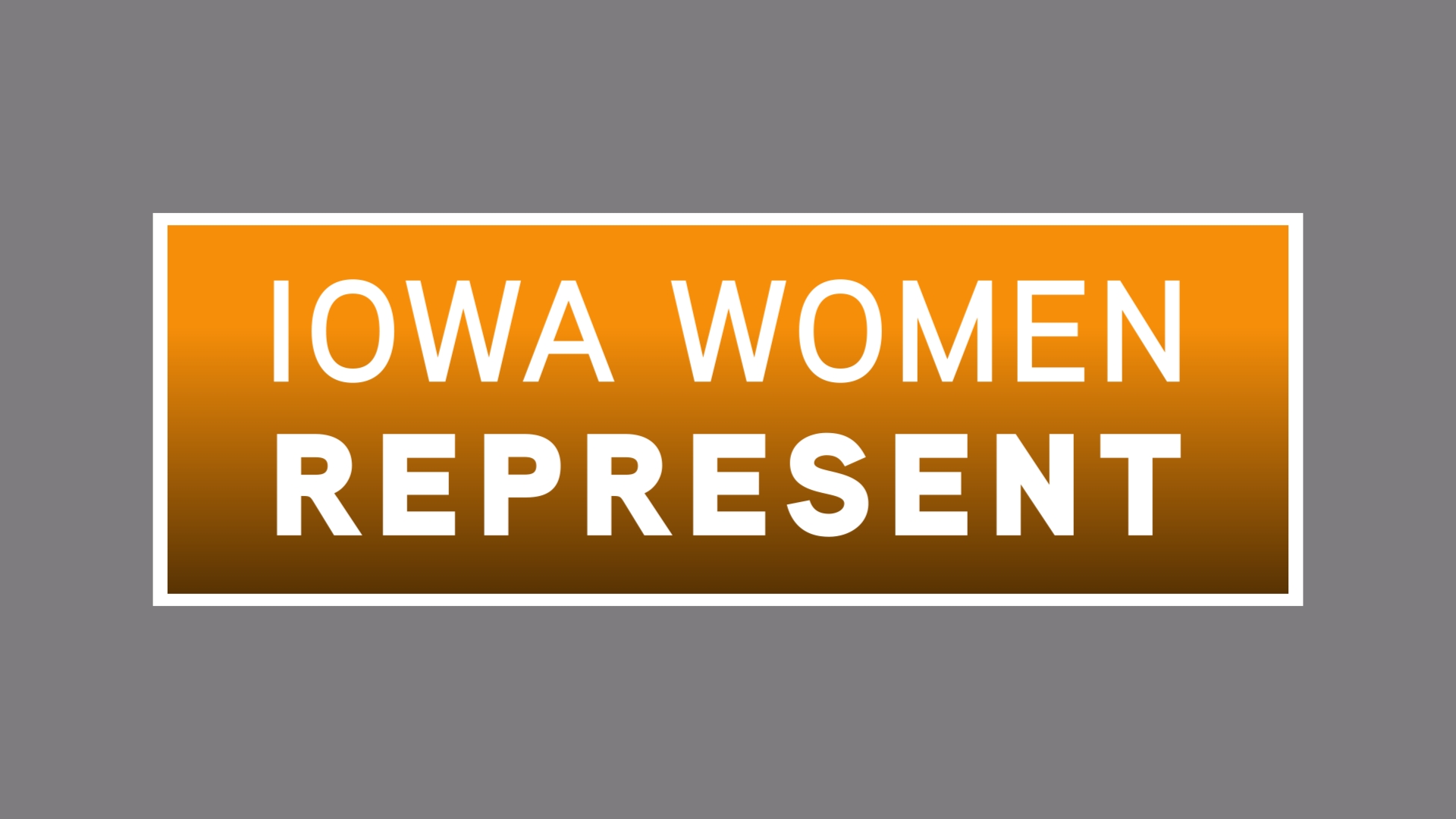DES MOINES, Iowa — Where would the world be without women?
It's hard to really digest that question, because it's women who are at the center of humankind's existence, bringing forth life as we know it.
Their role in the world has shifted—women aren't just mothers. They're scientists, artists, lawmakers and peacekeepers. However, women haven't always had a place at the table.
They fought for it.
Some say the glass ceiling is shattered, others say it's only cracked. Either way, women know the list of who they are, and what they do, is growing and growing.
For Women's History Month, Local 5 has spotlighted several Iowa women who have made their marks on the world and spotlighting a few more as well as highlighting the systemic inequities women face compared to men.
Meet Mayor Paula Dierenfeld: Iowa's longest-serving woman mayor
Paula Dierenfeld went to college at the University of Northern Iowa to major in business but ended up diving into political sciences.
"I had no idea what political science was when I signed up as a general ed course," Dierenfeld told Local 5's Jackie Schmillen. "And once I took that course, I just became absolutely fascinated with political science."
From there, the future-mayor interned for then-Republican Rep. Chuck Grassley in Washington before coming back to her home state to work as a staff director for the Iowa Legislature.
"Then I got a call from the governor's office, Gov. Terry Branstad was in office at the time, and he said, 'I have a position on my staff, would you be interested in coming in and working for me?' So I did that for 10 years," Dierenfeld said.
She worked for Gov. Brandstad as a legal counsel.
"And you can imagine that in that role, you're involved in everything," Dierenfeld said. "So, this was never the ultimate goal, of being the mayor of Johnston."
Dierenfeld said she wrote a note to herself to run for office someday back in college, but she didn't really see herself in that position.
"It was at my neighbors who said, 'We think you should run for office,' so I did run," she said. "It was intimidating for me at the time because I had always worked for others, you know, in those elective roles."


She said it was scary to put her own name on the ballot.
"You take some risk, and it's pretty intimidating, but I put my name on the ballot. I went out and I did the door-to-dooring and actually loved it."
When asked if there's anything about being a woman that she uses in her role now that helps her succeed, Dierenfeld said she doesn't know.
"I 've never ascribed to the notion that women are different than men in elected positions," she said. "I think we care about the same issues. I think that we, you know, I don't know that our viewpoints on, you know, the big issues are that different."
"The same qualities that make men successful as elected officials are the same qualities that will make women successful."
Leading a city isn't a task for anyone, so Dierenfeld said one of her biggest responsibilities is going into schools and showing girls and boys that women can be leaders, too.
"You know, we didn't see that much, or I didn't see that so much when I was younger, but I think it's important that little boys and little girls see women in those kinds of positions," Dierenfeld said. "And so I take that responsibility very seriously."
What about her future as mayor? Dierenfeld said she may run again for her position.
"Or I may look at another position, you know. Public service is in my blood. I love it, and I think I do it well," she said. "It will always be it, it will always be something that I'm involved in."
Self-doubt, intimidation could be to blame for lack of female representation among local Iowa governments
Of Iowa's 937 mayors, 128 are women.
Why aren't there more women serving this position in the state?
A report from Iowa State University's Carrie Chapman Catt Center found nearly two-thirds of candidates running for city-wide office were men, meaning not a lot of women are running for these positions.
Another point to note—when women run for office, they have just as high of a chance of winning as men do on a city-level. Women who run win around 77% of the time while men win around 80% of the time.
So, why aren't more women running if they have just as good of a chance at winning?
"Looking at municipal government, I think one of the biggest problems is getting women on the ballot and challenging incumbents," said Kelly Winfrey with the Carrie Chapman Catt Center. "In a lot of cases you might have mayors or city council members who have been there for a long time, so running against them seems difficult."
Intimidation is one big factor, but there's another reason.
"Women's own self-doubt is one of the biggest barriers to running for office," Winfrey added. "Research has looked at how qualified women think that they are to run to office and found that men are much more likely to say that they think they are qualified to run than equally qualified as women are."
Why does this matter? Because representation matters in public office.
"We live in a democracy, and that democracy is supposed to represent the people within it. And therefore, we need to be a representative democracy and we need about half of the people in political office to be female," Winfrey said.
"But also having more diverse groups making decisions, and that includes gender diversity, ethnic diversity, other backgrounds those bring different perspectives to the table, which research says leads to better policymaking."
Women in STEM and supporting equality among these organizations
Empowering young women in Iowa to pursue careers in science, technology, engineering and math has been pushed to the center stage in recent years.
Organizations are working hard to push back on gender inequality that's still very evident in these subject areas. One of these groups is the University of Iowa's Women in STEM Ambassadors.
WiSA focuses on outreach for women of all ages looking for a career in STEM.
Encouraging and supporting women in these disciplines is so important because it's easy to feel overwhelmed or overlooked in these fields that have traditionally been male-dominated, according to Lily Jones, one of WiSA's organizers.
"A big barrier for women entering and staying in STEM fields is this internalization of stereotypes that women aren't interested in or good at STEM careers," Jones said. "You know, we're influenced at a very early age by what we see in media, and if girls aren't seeing themselves represented as engineers or scientists they aren't likely to pursue those fields further down the road."
WiSA's mission is to cut back on these stereotypes and misconceptions. They also want to get more young women involved and interested in the fast-growing STEM career fields.
Jones said she is really passionate about this goal after struggling quite a bit herself in her first few years as a chemistry major.
"I felt kind of isolated and I doubted myself a lot, and you know, I think I just kind of got lucky with the people I was able to interact with," Jones said. "And that made all the difference in the world. You can do anything you want to do, what's most important is how hard you're willing to work for it."
The notorious pay gap is real, and it's different for each demographic
Women make an average of 82 cents compared to a dollar for men for the same exact work.
March 24 is Equal Pay Day, and the date isn't arbitrary.
The date March 24 signifies how far into the next year a woman must work to make what a man did the previous year, according to the American Association of University Women.
Equal pay is based on what the average man makes in one year, from Jan. 1 to Dec. 31. But in order for the average woman to make the same amount as a man does in one year, she would have to work an extra 83 days.
That 83rd day is March 24.
There is more than one Equal Pay Day, actually.
For Asian American and Pacific Islander women, Equal Pay Day is March 9, meaning these women have to work an extra 68 days to make what the average white man does in one year.
Mother's Equal Pay Day is June 14. That means a mother makes 70 cents for every dollar a white man makes.
For Black women, that date is pushed back to Aug. 3. That's 63 cents for every dollar a white man makes, and an extra 215 days of work.
Native American women make even less. Their Equal Pay Day is Sept. 8. They make about 60 cents to the white man's dollar.
Latina's Equal Pay Day is Oct. 21, meaning they have to work 658 days just to make what a white man made in 365 days.
There is some good news about the pay gap— women's earnings has increased by 22% in the last 60 years. It's progress, albeit incredibly slow.
Currently, women are missing 18% of their paychecks compared to the average man's paycheck for the same work.

